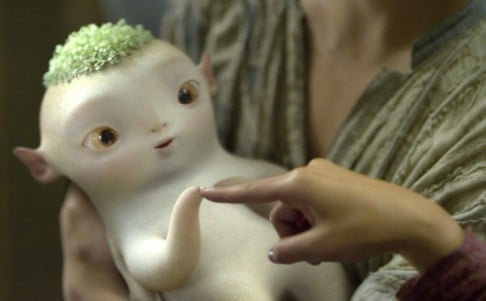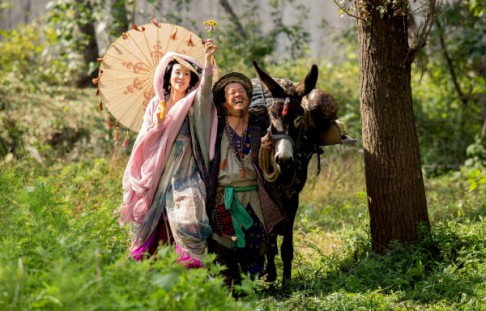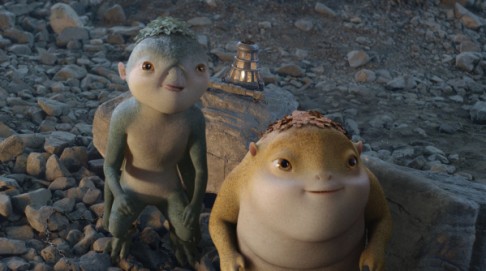
How creative mind behind Shrek finally made his Hong Kong movie
Monster Hunt director Raman Hui relished the chance finally to work on an original live-action feature film in his home city
journey for Raman Hui Shing-ngai to direct his first live-action feature.
Although he designed characters for DreamWorks' (1998) and the series (from 2001), co-directed (2007) and is internationally regarded as a leading player in his field, the Hong Kong-born animator was repeatedly rebuffed whenever he pitched a Chinese-language animation project to Bill Kong Chi-keung.
Monster hunt review
The fact that he and Kong - the head of Edko Films and the producer behind modern classics such as and - have known each other for 18 years didn't help one bit.

"There was one time - I had been working in Hollywood for close to 20 years then - when I asked him if it was possible for me to return to Hong Kong and make an animated movie, and he said no," recalls Hui, 52, with a chuckle.
"That was even after . So I asked why, and he said he was not familiar with animated movies and didn't feel comfortable creating them. A few years later, he came to Hollywood and we had a quick drink, where he casually told me he wanted to make a live-action movie with a lot of special effects."
That would become the family-oriented fantasy film - the fruit of a deceivingly simple decision that belies the decade of determination before Hui finally makes his major debut on home turf.
Partly inspired by the Chinese classic text , and partly influenced by movies such as , and , Hui's film depicts a mythical world in which monsters live among people by disguising under human skins.

When a coup d'état breaks out in the monsters' world and their former king's baby son - who resembles a radish with four arms - ends up under the protection of a pair of amateur monster hunters (played by Jing Boran and Bai Baihe), the stage is set for an action adventure that doesn't only indulge in its computer-generated fantasy creatures, but also argues against mankind's propensity to disrupt nature's order.
Hui began to refine the script in early 2009, but there were many obstacles to overcome before the film entered pre-production in Beijing in February 2013.
"We did a test to see if it's possible to make the creatures interact with the human characters. Bill took that test to talk to people about making the movie, and a lot of them doubted the project. They felt it would be too hard to pull off in Hong Kong or [China]. But we kept going."
The animation director's previous experience with actors had been limited to voice recording sessions, so it was a steep learning curve. "At the beginning, when I found out it was going to be a live-action movie, I had no idea how long it would take to shoot the movie. I was extremely green," says Hui.

"I would ask stupid questions like, 'Are we going to shoot it for a year?' And then Bill would look at me like, 'Are you crazy? That would be very expensive.' In the animation world, we usually spend a few years to make a movie, but now I know that in live-action, 90 days would be considered a big shoot."
Hui was initially excited by the efficiency of live-action filmmaking - until he realised how long it would take for his effects-laden movie to finish post-production after the shoot wrapped in December 2013.
The dropping of lead actor Ko Chen-tung - whose scenes, including special effects, were "almost finished" - after he was blacklisted in China for drug offences last August set the project back another six months. Ko's part was subsequently reshot with Jing.

None of these problems deterred Hui from meticulously planning , which represents both his first solo effort as director and his first attempt at live-action filmmaking. "This is the first time I'm responsible for the whole movie," he says.
"I tried to utilise my past experience as much as I could. For example, I told Bill I would feel more comfortable if I had the whole movie out on storyboard first. It's the way we make animated movies. Even for the scenes that don't have any special effects or character, we still storyboard them out.
"I wanted to see how the script works, to see if the comedy or drama can be sustained. A live-action director usually wouldn't do that."
Hui says he didn't only conceptualise his movie for the audience in China, but for the entire Chinese-speaking population around the world. "For example, [in the movie] I don't explain how the (supernatural talismans in Taoist tradition) work because all Chinese know what it is. When you put it on a monster, it stops."
What surprised Hui is that even overseas viewers who have seen the film appeared receptive. "I thought I would have to explain to American audiences that is something that the monsters are allergic to. But when we screened it for non-Chinese audiences from film festivals and distributions, they had no problem understanding it."
So does the rookie director envisage a sequel if this first movie does well commercially? "Yes, if it does well," says Hui confidently. "We expect to make another one."

